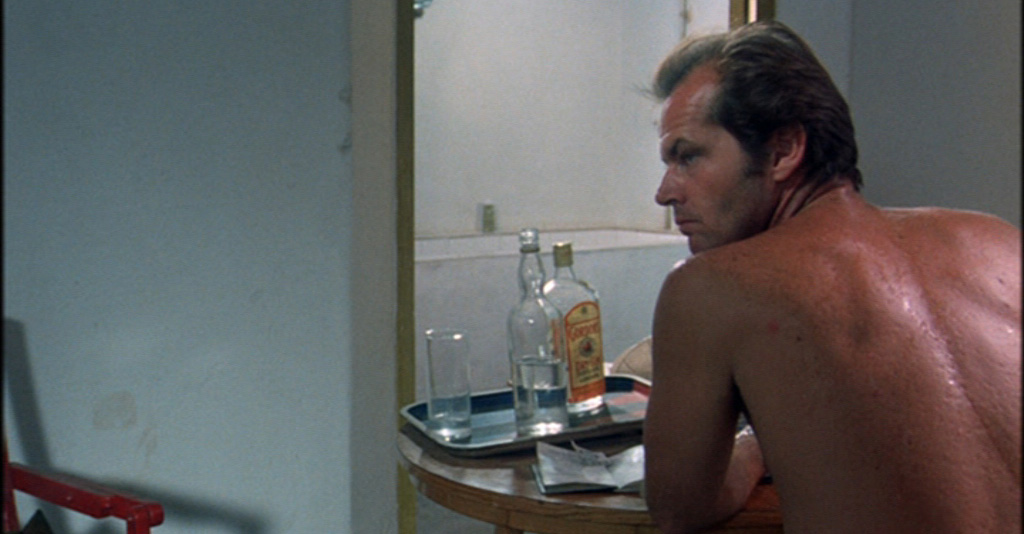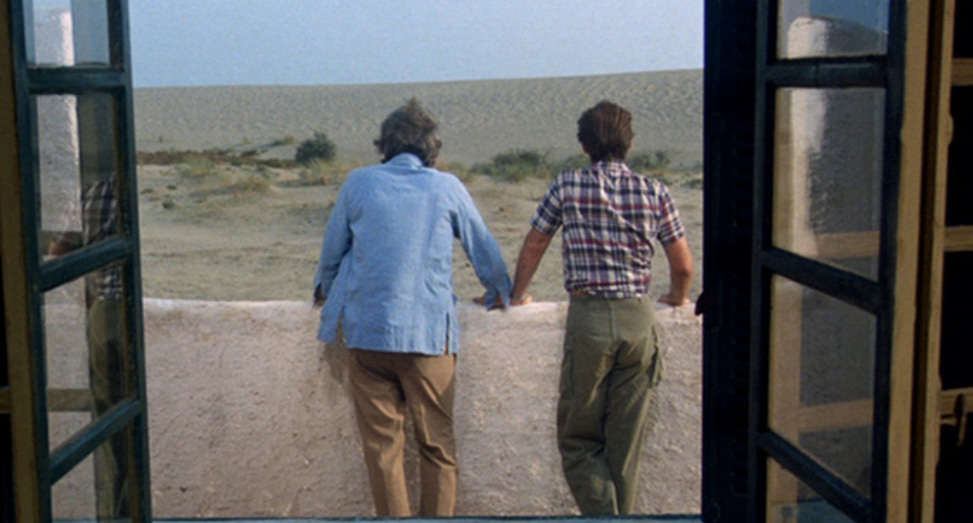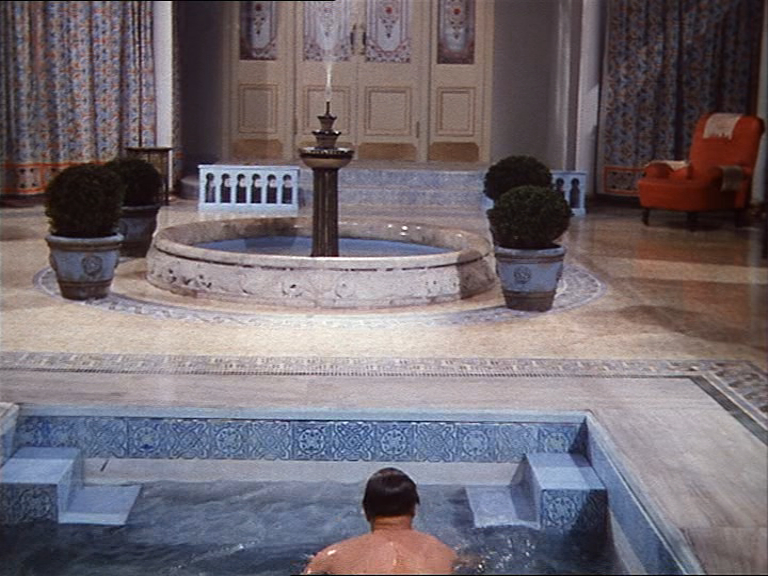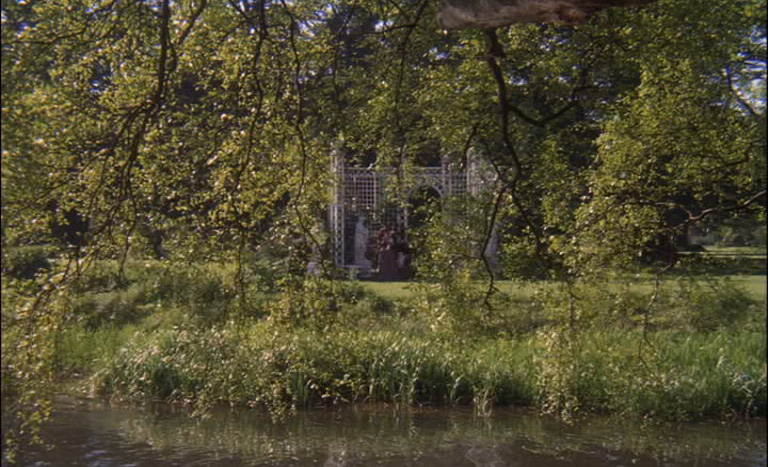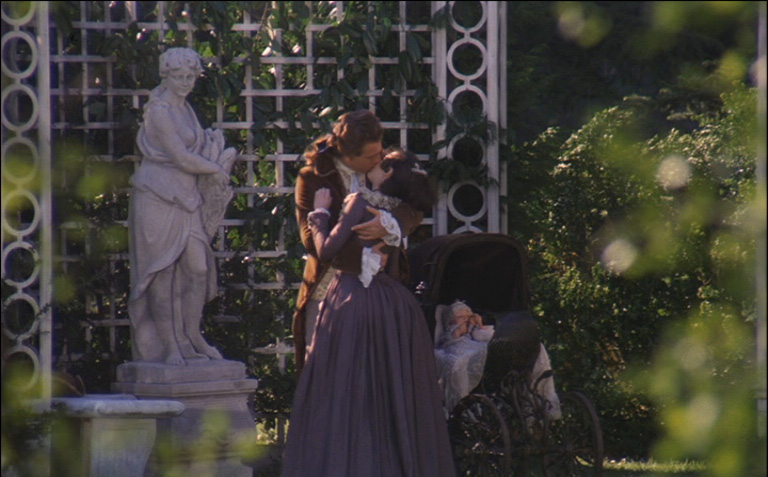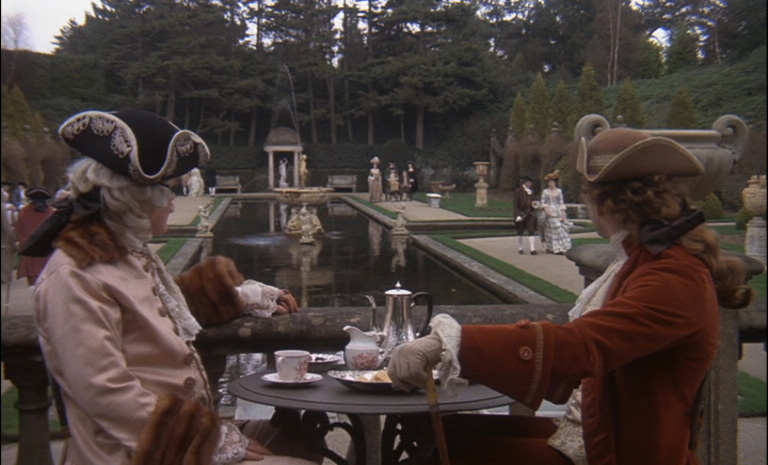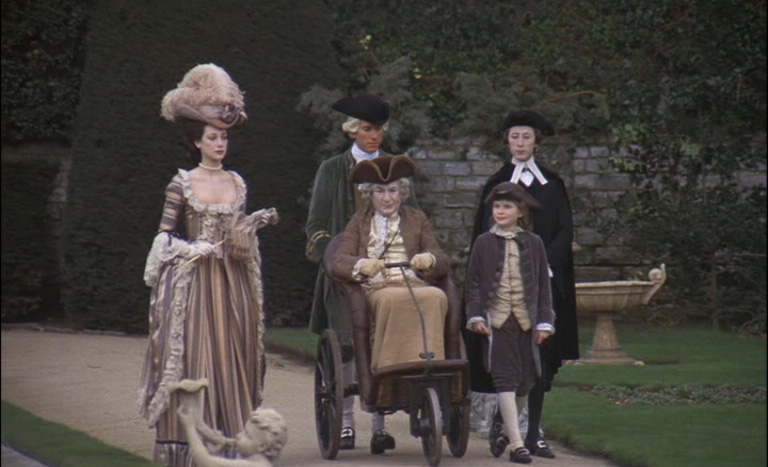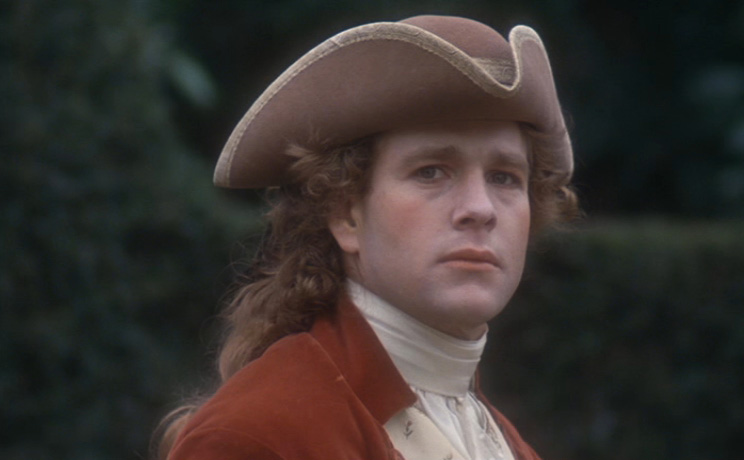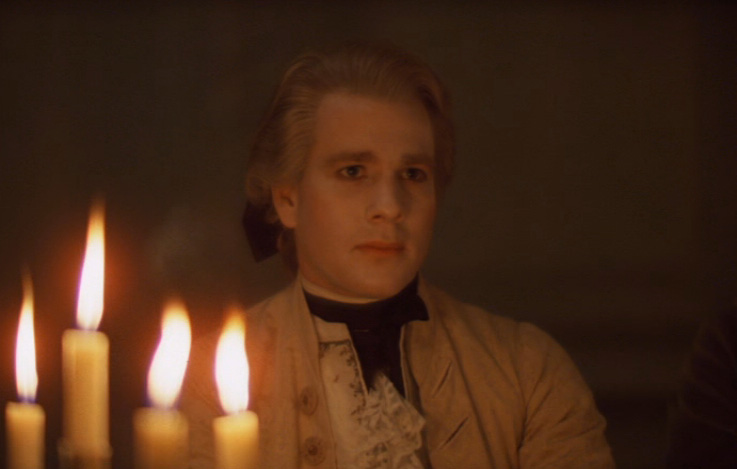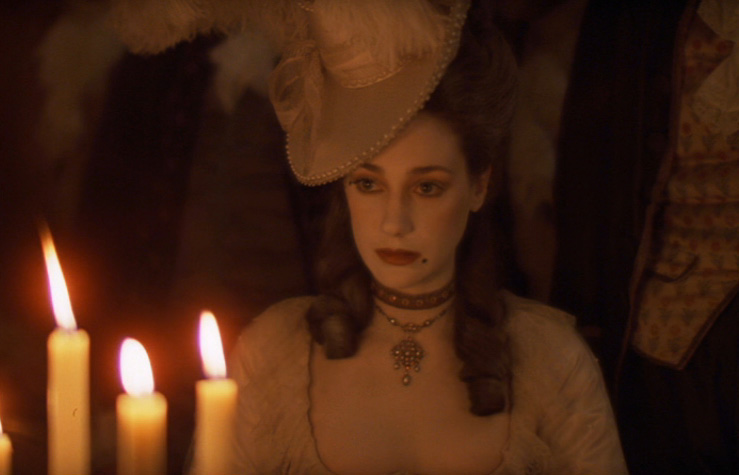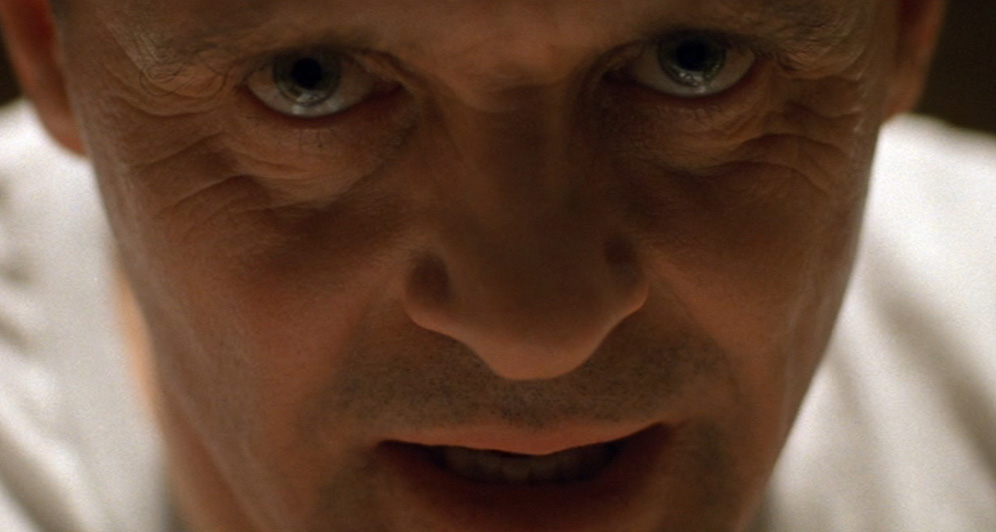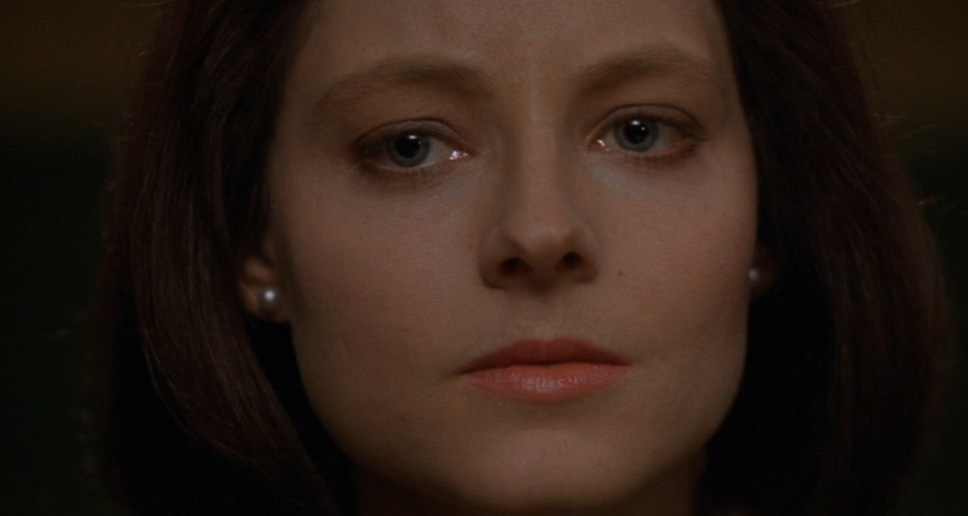Towards an Embodied Poetics of Cinema: The Metaphoric Construction of Abstract Meaning in Film
Maarten Coëgnarts and Peter Kravanja
In the 1960s and 1970s, the discipline of film studies was dominated by two doctrines or “Grand Theories” (Mills): subject-positioning and semiotics. The first one has its roots in Lacanian psychoanalysis, the second in Saussurean structuralism. In the mid 1980s, cognitive film studies, initiated by David Bordwell and Noël Carroll, proposed a radically different approach to film analysis and spectatorship. Rather than addressing the unconscious processes and syndromes favoured by Grand Theory, cognitivism, as the name suggests, intended to explore film reception in terms of the cognitive and perceptual processes of spectators by addressing a variety of particular questions such as: Which are the operations of visual conventions in cinema? What makes the shot/reverse shot comprehensible? What are the capacities that enable us to grasp and follow a story? How do we grasp the story logic of narrative films? A prototypical example of this approach would be Bordwell’s 1985 publication Narration in the Fiction Film in which he offers a top-down explanatory model of narrative comprehension. According to this model, the beholder applies a range of specific cognitive schemas (e.g. cause and effect) to reconstruct the fabula or the chronological story world from the syuzhet or plot structure (i.e. the actual arrangement of the fabula in the film).
In the introductory essay of Poetics of Cinema, one of his most recent works, Bordwell introduces the concept of “poetics” as an alternative framework to what he calls “interpretive school” (12). An interpretive school, as he defines it, “asks the writer to master a semantic field informed by particular theoretical concepts and then to note certain features of films that fit that field” (12). Poetics, as Bordwell takes it, is a somewhat different endeavour. Contrary to doctrine-driven methods, poetics doesn’t offer a distinct critical school. It has no semantic field of its own, no set of rules that aims to dictate how films should be interpreted (12). Bordwell writes:
Poetics derives from the Greek word poiesis, or active making. The poetics of any artistic medium studies the finished work as the result of a process of construction—a process that includes a craft component (such as rules of thumb), the more general principles according to which the work is composed, and its functions, effects, and uses. Any inquiry into the fundamental principles by which artifacts in any representational medium are constructed, and the effects that flow from those principles, can fall within the domain of poetics. (12)
Crucial to the poetics of cinema is the following key question: how do filmmakers use the aesthetic dynamics of the film medium to achieve particular effects on spectators? What are the principles according to which films are constructed and through which they elicit certain effects from viewers (Poetics 23)? To characterise his research programme Bordwell describes six P-words: “particulars, patterns, purposes, principles, practices,and processing” (24 original emphasis). Although these P-words are related, it is possible to divide them into three basic categories: (a) the formal structure of the film or batch of films, (b) the activities of the filmmaker and (c) the activities of the spectator. As a guideline for analysing the practices of a filmmaker, Bordwell finds it useful to conceive of it in terms of problem-solving or means-ends reasoning, i.e. the assumption that a filmmaker makes certain creative choices (means) in order to achieve certain purposes or effects (ends) (25). The task of the analyst then is to reconstruct the constructional situation of the filmmaker by offering a description of the stylistic choices or solutions as they can be deduced from the formal structure of the finished work (i.e. the particular films).
In this article we wish to apply Bordwell’s analytical framework by considering a specific and abbreviated case of meaning construction in film, namely the construction of abstract thought. More specifically, we seek to address the following questions (note the correspondence with Bordwell’s initial question): How do filmmakers use the aesthetic dynamics of the film medium to convey abstract meaning to the viewer? What are the principles according to which abstract meaning is shaped in film? By addressing these questions, we are simultaneously entering the domain of cognitive linguistics and Conceptual Metaphor Theory (CMT), in which the topic of abstract thinking has proven to be a fruitful and productive subject of investigation (Lakoff and Johnson 1980, 1999; Johnson 1987, 2005, 2007; Gibbs; Boroditsky, Ramscar, and Frank; Johnson and Rohrer). One of CMT's most fundamental claims is that what we call “abstract” concepts are defined by systematic mappings from bodily-based sensorimotor source domains onto abstract domains. A key concept is that of “image schemas” (Johnson 1987, 2005, 2007; Lakoff 1987; Hampe), which has been put forward as a significant solution to the problem of how abstract reasoning and conceptualisation are possible. As recurring patterns of sensorimotor experience and organism-environment interaction these non-arbitrary schemas play a crucial role in our understanding of abstract thought. Consider, for example, the following sentence: “We have a long way to go before our theory is finished” (Johnson and Rohrer 38). According to Johnson and Rohrer, there is a conceptual metaphor involved, namely that of purposeful activities are journeys, via which we understand progress towards some non-physical goal (i.e. the completion of a theory) as progress in moving towards a destination (38). [1] In particular, the spatial logic of the Source-Path-Goal schema (SPG), which manifests itself in movement and consists of a starting point, a destination, and a path from the starting location to the destination, is mapped onto the abstract target domain (i.e. mental activity). The conceptual mapping contains the following elements (see Table 1):
Purposeful Activities are Journeys
Source (motion in space)
Target (mental activity)
Starting point A
Initial state
Ending location B
Final state
Destination
Purpose to be achieved
Motion from A to B
Process of achieving purpose
Obstacles to motion
Difficulties in achieving goals
Table 1. The purposeful activities are journeys metaphor (Source: Johnson and Rohrer 38).
As this schema illustrates, spatial and bodily logic are metaphorically extended, thus making it possible for us to make sense of abstract conceptual domains. As such, the human body operates as the centre of conversion between concrete structures of spatial experience on the one hand and abstract structures of conceptual thought on the other hand. As Johnson puts it:
Image schemas are important, for they make it possible for us to use the structure of sensory and motor operations to understand abstract concepts and to draw inferences about them. The central idea is that image schemas, which arise recurrently in our perception and bodily movement, have their own logic, which can be applied to abstract conceptual domains. Image-schematic logic then serves as the basis for inferences about abstract entities and operations. (“The Philosophical Significance” 24)
Image schemas, thus, or what Peter Woelert in a similar and more general way describes as the “spatialization of human thinking”, function in a fundamentally ambivalent manner (Woelert 115). On the one hand, spatialisation predisposes and thus narrows human thinking, while at the same time it is being constitutive, making abstract and higher-order thinking possible.
By combining insights from Bordwell with CMT, we set out to demonstrate how abstract meaning is constructed in film. In particular we want to investigate the central role of conceptual metaphor and image schemas in film by considering some of the P-words from an embodied point of view. [2] The basic tenet of our article can be summarised as follows: filmmakers use embodied principles in the form of image schemas and conceptual metaphors to express abstract meaning to the spectator. In what follows we shall illustrate the embodied poetics of cinema thesis via a number of representative examples of embodied visual meaning-making in film. By analysing the stylistics and the visual patterning (camera movement, composition, editing, staging, shot scale) of particular film scenes, we will demonstrate how filmmakers often resort to bodily-based sensorimotor structures to come to terms with abstract notions such as time or psychological content. In addition, and for lack of further empirical evidence, it is important to stress the hypothetical character of this approach. What we see on the screen might be, but does not necessarily have to be, interpreted along those very image-schematic/metaphorical lines that our argument suggests. Nevertheless, we hope that the connection of our analysis to shared, universal structures of sensorimotor experience will provide our argument with sufficient objective credibility, as to overthrow the critique of being merely subjective.
From Particulars to Principles of Embodied Visual Meaning-making in Film
According to Bordwell, the poetics of any artistic medium has the isolated work at the centre of its concern (24). Particulars such as a camera movement, a line of dialogue, or a certain cut are the primary objects of inquiry. In this section, we shall discuss some significant scenes from various films, which are notable for their strong representation of abstract meaning. As Grodal has pointed out in Chapter Nine of his book Embodied Visions, entitled “Art Film, the Transient Body, and the Permanent Soul”, such films, which he refers to as art films, combining stylistic innovation with a claim to higher meaning, are often characterised by a certain “disembodiedness” (208). Contrary to the prototypical mainstream action film, which is based on concrete actions and embodied interaction, these films involve superordinate categories (i.e. categories that are placed above the basic-level categories) (209). Referring to Lakoff and Johnson’s work Philosophy in the Flesh, Grodal defines the basic-level “as the highest level at which a single mental image can represent an entire category and the highest level at which a person uses similar motor actions for interacting with members of a category” (209). Take for instance the top-to-bottom hierarchy vehicle/car/sports car (Gallese and Lakoff 2005). One can easily imagine a car, but not a vehicle in general. This is because we have motor programmes for physically engaging with cars, but not with vehicles in general (466). In Play Time (Playtime, Jacques Tati, 1967), for example, we are shown a series of particular images depicting modern buildings and city traffic that together clearly represent concrete indices of a more abstract category (i.e. modernity). None of these concrete visual images taken alone, however, can function as a mental image that stands for the whole category. As a result the superordinate category remains disembodied and abstract (Grodal 209). In order to absorb the abstract meaning, we therefore have to switch metaphorically from the embodied and concrete to the disembodied and abstract (Grodal 210). As our analysis will show, it is through the identification and description of primitive or basic-level schemas associated with such action concepts as seeing and walking, that the metaphoric construction with its higher meaning will reveal itself to the viewer. In what follows, we analyse six different scenes, each relying on a primitive image schema to represent various kinds of disembodied and abstract levels of meaning.
In The Passenger (Professione: reporter, Michelangelo Antonioni, 1975), one particular scene addresses the following disembodied problem: how can we conceptualise a flashback (i.e. an alteration of the story order in which the plot moves back in time) without resorting to the more conventional solution of montage? In order to solve this problem the filmmaker makes use of the “time-moving metaphor”, which is one of two ways (according to CMT) in which time is conceptualised, the other being the “ego-moving metaphor” (Lakoff and Johnson 1999; Boroditsky; Gentner; Ahrens and Huang). “In one the observer is stationary and time is moving”, while in the other “the observer is moving and time is stationary” (Philosophy in the Flesh 141). The expression “Time is flying by” is an example of the first case (143 original emphasis); “We’re getting close to Christmas” of the second (146 original emphasis).
Similarly, George Lakoff describes the time passing is motion of an object metaphor and the time passing is motion over a landscape metaphor, respectively (“The Contemporary Theory” 216–18). [3] Let us take a closer look at the way the time-moving metaphor is conceived at the film’s formal level. When foreign correspondent David Locke (Jack Nicholson) switches his identity for that of deceased arms dealer Robertson (Charles Mulvehill) the story order is altered. The plot moves back in time to a conversation between Locke and Robertson that took place earlier than the event already shown. This flashback occurs as follows: the camera moves uninterruptedly in a horizontal way, past a stationary observer (Locke), from an initial condition A (the present: Locke at the table while he switches his passport photo for Robertson’s) over a pathway C to a destination B (the past: both men talking on the veranda) and then returns from B (the past) to A (the present). The concrete dynamics of the camera function as a means to instigate the Source-Path-Goal schema and hence the superordinate category of time. The spatial logic of the SPG-schema, which consists of a starting point, a destination and a path from the starting location to the destination, is mapped onto the abstract target domain of time. As the movement takes place horizontally, the left-right schema is part of the metaphoric conveyance. The left side of the room is temporally one with the past; the right corresponds to the present. To sum up, the time-moving metaphor consists of the following conceptual mapping (see Table 2):
Passage of Time (Flashback) is Motion in Space
Source (motion in space)
Target (passage of time)
Dominant stylistic principle (lateral movement of the camera)
Starting point A
Initial state (i.e. the present; Robertson is dead).
Long shot of David Locke, sitting motionless at a table, changing his identity for Robertson’'s.
Ending location B
Final state (i.e. the past, when Locke had a discussion with Robertson).
Long shot of Locke and Robertson having a discussion on a veranda outside.
Destination
Purpose to be achieved (i.e. going back in time when Robertson was still alive).
Long shot of Locke and Robertson having a discussion on a veranda outside.
Motion from A to B
Passage of time (i.e. from present to past and back again).
Lateral camera movement from left to right and back again.
Table 2. The passage of time is motion in space metaphor in The Passenger (Michelangelo Antonioni, 1975).
The Passenger: The SOURCE-PATH-GOAL schema.
The previous example deals with horizontal movement and hence left-right spatial orientation. Depth-of-field movement, however, would turn the schema into front-behind. At the beginning of The Life and Death of Colonel Blimp (Michael Powell and Emeric Pressburger, 1943), the filmmakers use depth-of-field movement to achieve an extended flashback via the time-moving metaphor. The film starts during the Second World War in the middle of a training exercise between the Home-Guard squad, led by Major General Clive Wynne-Candy (Roger Livesey), and some soldiers from the opposite side, led by the young lieutenant “Spud” Wilson (James McKechnie). Wynne-Candy is captured by Wilson in a Turkish bath. Following the German way of fighting, the latter has struck pre-emptively, thus breaking conventions of war. Frustrated by this foul deed, the old General starts a fight and both men fall into a bathing pool. As they are drifting motionlessly in the water, the camera leaves the two stationary men behind to move independently and uninterruptedly over the bathing pool along a pathway into the depth of field of the shot, from the year 1943 to the year 1902, forty years ago, when Candy, like Wilson, was a young lieutenant himself. When the camera reaches the other side of the Turkish bath, the younger version of the Major-General is shown, swimming from below into the frame. The present is arrayed as the space in front, the past as the space in the background. [4] As in the scene from The Passenger, the Source-Path-Goal schema is metaphorically appropriated to shape our understanding of time (see Table 3).
Passage of Time (Flashback) is Motion in Space
Source (motion in space)
Target (passage of time)
Dominant stylistic principle (depth-of-field, movement of the camera)
Starting point A
Initial state (i.e. the present, the year 1943).
One side of the Turkish bath (arrayed as the space in front of the frame).
Ending location B
Final state (i.e. the past, the year 1902).
The other side of the Turkish bath (arrayed as the space in the background of the frame).
Destination
Purpose to be achieved (i.e. going back in time).
The camera, reaching the other side of the Turkish bath (i.e. the space in the background).
Motion from A to B
Passage of time (i.e. from present to past).
In-depth movement from A to B.
Table 3. The passage of time is motion in space metaphor in The Life and Death of Colonel Blimp (Michael Powell and Emeric Pressburger, 1943).
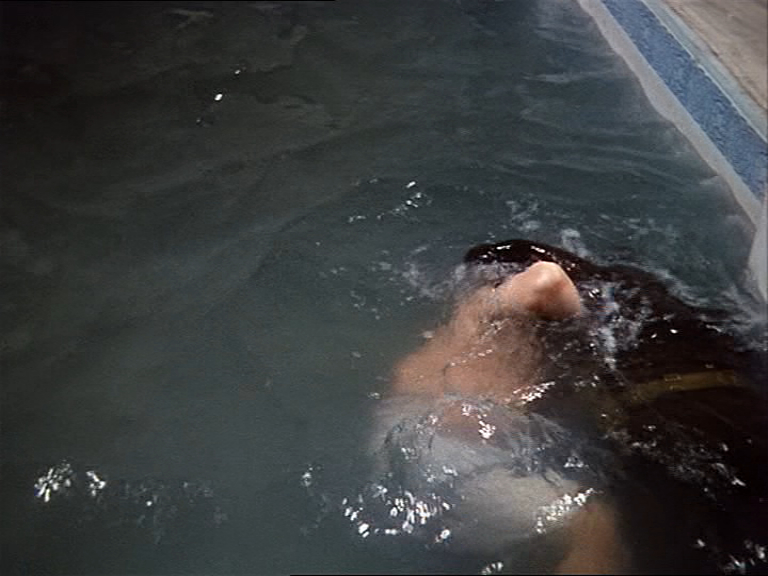
The Life and Death of Colonel Blimp (Michael Powell and Emeric Pressburger, 1943): The SOURCE-PATH-GOAL schema.
The same bodily logic can be found in Barry Lyndon (Stanley Kubrick, 1975), in which the Source-Path-Goal schema is used not to construct time, but to create a metaphoric representation of the mental process of observing (see Table 4). The German sociologist Niklas Luhmann, following George Spencer-Brown’s book Laws of Form, defines the process of observation as simply the ability to make distinctions (73). According to him observation consists of two components: making a distinction and indicating one side (and not the other side) of the distinction. In Barry Lyndon this operation can be discerned in the scene in which Lady Lyndon (Marisa Berenson) catches her husband Redmond Barry (Ryan O’Neal) being unfaithful to her. She is strolling by a river with Reverend Samuel Runt (Murray Melvin) and the young Lord Bullingdon (Dominic Savage). The camera suddenly zooms in over the water deep into the frame, where Redmond is seen embracing and kissing a servant girl. This point-of-view shot, showing the action observed by Lady Lyndon, is formally accentuated by an accelerated zoom-in, which can be interpreted as a sign of the female protagonist's emotional involvement. As such, the distinction performed by her psychic system coincides with the distinction performed by the framing, in which a spatial movement across the line of depth structures the indication of what is happening between Redmond and the servant girl. The abstract target domain of observation is thus clarified through the concrete target domain of motion in space. The observation, executed by Lady Lyndon, is articulated to the viewer via the Source-Path-Goal image schema, allowing the film to offer second-order observations (i.e. the viewer observes Lady Lyndon in the mental state of observing).
Observation is Motion in Space
Source (motion in space)
Target (mental activity)
Dominant stylistic principle (zoom-in)
Starting point A
Initial state (i.e. making a distinction).
Very long shot from Lady Lyndon’s point of view.
Ending location B
Final state (i.e. indication of one side of the distinction).
Close medium shot of Redmond and the servant girl.
Destination
Purpose to be achieved (i.e. indicating Redmond’s infidelity).
Close medium shot of Redmond and the servant girl.
Motion from A to B
Mental process of observing and indicating.
Zooming in from A to B towards the subject (from very long shot to close medium shot).
Table 4. The observation is motion in space metaphor in Barry Lyndon (Stanley Kubrick, 1975) (Lady Lyndon’s observation of Redmond Barry’s infidelity).
Barry Lyndon (Stanley Kubrick, 1975: The SOURCE-PATH-GOAL schema.
The same constructional schema is applied much earlier in the film when Redmond first notices Lady Lyndon in the garden of a baroque castle. In this scene Redmond and his patron Chevalier de Balibari (Patrick Magee) are shown sitting at a table against a balustrade. The former is shown to the right, the latter to the left. The symmetry is remarkable: both men are filmed in profile and the physical positions of the characters mirror each other. They simultaneously turn their faces inward, to the garden, where in the middle of the frame, between the two gentlemen, a panoramic view of Lady Lyndon is revealed. She is accompanied by her sick husband, Sir Charles Lyndon (seated in a wheelchair), their son, the young Lord Bullingdon and Reverend Runt. Similarly to the adultery scene, Redmond’s observation is given form metaphorically through a subjective zoom-in, where the indication of Lady Lyndon as the object of his gaze (and distinction) is structured in terms of a forward spatial movement. The camera is determined by Redmond’s direct visual experience. This interpretation is immediately confirmed by an objective, frontal reverse shot of Redmond’s face, thus connecting the zoom-in to Redmond’s perception. Again, the conceptual mapping of the metaphor can be summarised as follows (see Table 5):
Observation is Motion in Space
Source (motion in space)
Target (mental activity)
Dominant stylistic principle (zoom-in)
Starting point A
Initial state (i.e. making a distinction).
Very long shot of the baroque garden, taken from the position of Redmond Barry.
Ending location B
Final state (i.e. indication of one side of the distinction).
Medium shot of Lady Lyndon.
Destination
Purpose to be achieved (i.e. indicating Lady Lyndon).
Medium shot of Lady Lyndon.
Motion from A to B
Mental process of observing.
Zooming in from A to B towards the subject (from very long shot to medium shot of Lady Lyndon).
Table 5. The observation is motion in space metaphor in Barry Lyndon (Stanley Kubrick, 1975) (Redmond Barry’s observation of Lady Lyndon).
Barry Lyndon: The SOURCE-PATH-GOAL schema.
Both scenes can be viewed as belonging to what Grodal in his essay on subjective aesthetics in film describes as the representation of subjectivity by means of “deviant or distorted enactional or perceptual access to a represented space”, one of the six key ways, according to the author, film subjectivity can be elicited from the viewer (236). More specifically, Grodal argues that subjectivity often entails restriction, meaning that “the subjective feeling results from the constraints imposed on unimpeded access” (241). The blocking of information in Barry Lyndon, caused by the character’s subjective point of view and the use of zoom-in, makes the viewer feel that he or she has no control over the diegetic world. As a result the viewer experiences strong, subjective feelings, which, Grodal argues, also reflect the experience of disembodiment, not only because the visual body is absent from the screen to anchor the experience, but also because of primitive self-feelings. According to the author, these self-feelings are constitutive of emotion-charged agency functions, but are here blocked due to the felt lack of control of vision (241).
Another basic image schema in the theory of conceptual metaphor that we wish to discuss and illustrate is the schema that Johnson refers to as centre-periphery (The Body in the Mind 124–25). This schema finds its physical roots in the experience of the body as the centre and the perceptual field as the periphery and states that an observed object gains intensity as it approaches the centre. The smaller the distance from the centre, the greater the potential for interaction and intimacy is (and vice versa). One of our first encounters with the centre-periphery schema is our experience of our torso and limbs. The central torso contains most of the vital organs, to which the peripheral parts (arms, legs, head and neck) are attached. The central part is crucial to the integrity of the whole body. Remove a leg, and what remains is still a body; if we, however, remove the torso, what is left are disconnected parts (Deane 634). From this basic experience, we are able, according to Johnson, to move metaphorically to a more abstract interpretation of the centre-periphery schema. As he puts it: “It shows itself not only in the structure of my perceptual field, but equally important as a structure of my social, economic, political, religious, and philosophical world” (125). In the scene from Barry Lyndon subsequent to Redmond’s observation of Lady Lyndon (as discussed above), this schema is metaphorically extended to create the inner feeling of heightened passion and falling in love (see Table 6). Lady Lyndon is shown sitting across a game table from Redmond. The scene is dominated by candlelight. Next to Lady Lyndon we find Reverend Runt. Here, rather than movement, editing and cinematic composition (in particular the size and closeness of the objects before the camera) function as filmic parameters to express the disembodied content of love and passion between the two characters. The scene is constructed using a series of cuts between static shots in which the expressions in the eyes of Redmond and Lady Lyndon are shown in an alternating pattern. In order to express their growing desire, the film uses the centre-periphery schema. This effect is achieved through a reduction of the distance between the camera and the actors. As the scene continues and their passion grows, the distance between the camera and the stationary characters is gradually decreased. This makes it seem as if they were approaching each other physically, even though their actual positions in front of the camera remain unchanged. Although the characters remain seated, the gradual reduction of the distance suggests a physical intimacy. Like the observation mentioned earlier, their love, as abstract phenomenon, is structured metaphorically in terms of a schema that has it origins in our shared physical experiences. The scene ends with Lady Lyndon announcing that she is going outside for a breath of fresh air. These words announce the film’s next scene: the balcony scene in which the metaphoric construction of love via the centre-periphery schema now takes the literal and physical form of a kiss.
Falling In Love is Spatially Altering from Periphery to Centre
Source (spatial change)
Target (mental activity)
Dominant stylistic principle (montage)
Starting point A (Periphery)
Initial state (i.e. neutral).
Medium shots of Lady Lyndon and Redmond Barry sitting at the game table. Other people are clearly visible in the frame.
Ending location B (Centre)
Final state (i.e. being in love).
Medium close-ups of Lady Lyndon and Redmond Barry. Other people are off-screen.
Alteration from A to B
Process of falling in love.
Cut from A to B, alteration from medium shots to medium close-ups.
Table 6. The Falling in love is spatially altering from periphery to centre metaphor in Barry Lyndon (Stanley Kubrick, 1975).
Barry Lyndon: The CENTRE-PERIPHERY schema.
The same schema is used in the crucial fourth and final encounter between Clarice Starling (Jodie Foster) and Dr Hannibal Lector (Anthony Hopkins) in Jonathan Demme’s Oscar-winning film, The Silence of the Lambs (1991). In this particular scene the filmmaker is confronted with the problem of how to visualise Hannibal Lector’s mental process of taking hold of Clarice Starling’s mind, her motives and childhood secrets, thus simultaneously revealing to the viewer the vital meaning of the poetic film title. The encounter, in a tightly guarded room with the doctor inside a cage behind bars, plays out like a complex psychological mind game. After Clarice confronts the doctor about him having misled the Senator with false leads, he offers her crucial traces that lead to the serial killer. Clarice in turn yields her deep emotional secret of a traumatic childhood experience, which explains her motivation for being a police officer. As a child she tried in vain to free a spring lamb from slaughter and still sometimes wakes up in the dark hearing the screaming of the lambs. In order to represent Hannibal Lector’s manipulating mindset and his discovery of her secrets, the film makes use of the centre-periphery schema. At first Clarice is depicted in a series of medium shots from Hannibal Lector’s point of view. The bars that separate them are clearly visible in the frame. The doctor in turn is almost immediately shown in close-up from Clarice’s point of view, thus eliminating the bars, suggesting that not Hannibal, but Clarice is imprisoned. As the scene progresses, the intimacy level increases. By alternating shots, the camera moves from periphery to centre, to closer angles on Clarice’s face, thus metaphorically representing Hannibal’s mental process of going inside her mind and secrets. When Clarice ultimately gives in, the bars are gone, and Hannibal has achieved his goal. As in Barry Lyndon, the characters remain stationary during the whole scene. On a psychological level, however, things are moving and shifting. In order to express this, the film moves metaphorically to an abstract interpretation of the centre-periphery schema. Schematically, the scene can be described as follows (see Table 7):
Entering Someone’s Mind is Spatially Altering from Periphery to Centre
Source (spatial change)
Target (mental activity)
Dominant stylistic principle (montage)
Starting point A (Periphery)
Initial state (i.e. Clarice’s motives for being a police officer are not yet revealed).
Close medium shot of Clarice. The bars are clearly visible in the frame, thus associating them with Clarice, not with Hannibal Lector.
Ending location B (Centre)
Final state (i.e. the revelation of Clarice’s secret).
Close-up of Clarice. The bars disappear.
Destination
Purpose to be achieved (i.e. the revelation of Clarice’s motives for being a police officer: her traumatic childhood experience with screaming lambs).
Close-up of Clarice.
Alteration from A to B
Mental process of entering someone’s mind.
Cut from A to B, alteration from medium shot to close-up.
Table 7. The entering someone’s mind is spatially altering from periphery to centre metaphor in The Silence of the Lambs (Jonathan Demme, 1991).
The Silence of the Lambs (Jonathan Demme, 1991): The CENTRE-PERIPHERY schema.
These examples from various films suggest the existence of underlying principles of abstract meaning-making in cinema. Although the purpose of each scene is different (the representation of time, love, observation etc.), they all make use of the same, recurring and analogous bodily schemas to elicit the desired effect from the viewer (i.e. the conveyance of abstract thought). As Bordwell states, principles often concern norms, “those explicit or implicit guidelines that shape creative action” and “govern conventions” (Poetics 25). Our analysis seems to indicate that some of the conventions that shape abstract thought are rooted in our daily bodily interactions with the world. Schemas arising from the nature of our bodies and our social and physical interactions in the world are metaphorically extended in order to deal with abstract and superordinate concepts like time, love and mental processes. Because of the strong connection with our bodies and daily lives, these schemas are often left unnoticed, applied without contemplation or even awareness. As preconceptual, highly schematic Gestalts, they function beneath the level of consciousness and prior to theoretical reflection. Rather than crisp rules, they are rules of thumb, operating in the background, and shaping the formal structure of those particular scenes that aim to depict disembodied higher meaning.
Notes
1. Following the convention in cognitive linguistics, we will use small capitals to indicate image schemas and conceptual metaphors.
2. For a discussion of film in relation to metaphor, image schemas and embodiment see also Buckland; Branigan; Fahlenbrach; and Forceville 2006, 2011.
3. For a discussion of these metaphors in relation to film, see also Nyíri.
4. For other uses of the Source-Path-Goal schema in film, see Forceville 2006, 2011; Forceville and Jeulink.
References
1. Ahrens, Kathleen, and Chu-Ren Huang. “Time Passing is Motion”. Language and Linguistics 13:3 (2002): 491–519. Print.
2. Barry Lyndon. Dir. Stanley Kubrick. Warner Bros, 1975. Film.
3. Bordwell, David. Narration in the Fiction Film. Wisconsin: University of Wisconsin Press, 1985. Print.
4. ---. Poetics of Cinema. New York: Routledge, 2008. Print.
5. Boroditsky, Lera. “Metaphoric Structuring: Understanding Time Through Spatial Metaphors”. Cognition 75 (2000): 1–28. Print.
6. Boroditsky, Lera, Michael Ramscar, and Michael C. Frank. “The Roles of Body and Mind in Abstract Thought”. Psychological Science 13.2 (2002): 185–88. Print.
7. Branigan, Edward. Projecting a Camera: Language-Games in Film Theory. New York: Routledge, 2006. Print.
8. Buckland, Warren. The Cognitive Semiotics of Film. Cambridge: Cambridge University Press, 2000. Print.
9. Deane, Paul. “Metaphors of Center and Periphery in Yeats’ The Second Coming”. Journal of Pragmatics 24 (1995): 627–42. Print.
10. Fahlenbrach, Kathrin. “Embodied Spaces: Film Spaces as (Leading) Audiovisual Metaphors”. Narration and Spectatorship in Moving Images. Eds. Joseph D. Anderson and Barbara Fisher-Anderson. Cambridge: Cambridge Scholar Press, 2007. 105–24. Print.
11. Forceville, Charles. “The Source-Path-Goal Schema in the Autobiographical Journey Documentary: McElwee, Van der Keuken, Cole”. New Review of Film and Television Studies 4 (2006): 241–61. Print.
12. ---. “The Journey Metaphor and the Source-Path-Goal Schema in Agnès Varda’s Autobiographical Gleaning Documentaries”. Beyond Cognitive Metaphor Theory: Perspectives on Literary Metaphor. Ed. Monika Fludernik. London: Routledge, 2011. 281–97. Print.
13. Forceville, Charles, and Marloes Jeulink. “Flesh and Blood of Embodied Understanding: The Source-Path-Goal Schema in Animation Film”. Pragmatics & Cognition 19.1 (2011): 37–59. Print.
14. Gallese, Vittorio, and George Lakoff. “The Brain’s Concepts: The Role of the Sensory-Motor System in Conceptual Knowledge”. Cognitive Neuropsychology 21 (2005): 455–79. Print.
15. Gentner, Dedre. “Spatial Metaphors in Temporal Reasoning”. Spatial Schemas in Abstract Thought. Ed. M. Gattis. Cambridge, MA: MIT Press, 2001. 203–22. Print.
16. Gibbs Jr., Raymond W. “Why Many Concepts Are Metaphorical”. Cognition 61 (1996): 309–19. Print.
17. Grodal, Torben. Embodied Visions. Oxford: Oxford University Press, 2009. Print.
18. Hampe, Beate. “Image schemas in Cognitive Linguistics: Introduction”. From Perception to Meaning: Image Schemas in Cognitive Linguistics, Ed. Beate Hampe. Berlin: Mouton de Gruyter, 2005. 1–12. Print.
19. Johnson, Mark. The Body in the Mind: The Bodily Basis of Meaning, Imagination, and Reason. Chicago: The University of Chicago Press, 1987. Print.
20. ---. “The Philosophical Significance of Image Schemas”. From Perception to Meaning: Image Schemas in Cognitive Linguistics. Ed. Beate Hampe. Berlin: Mouton de Gruyter, 2005. 15–33. Print.
21. ---. The Meaning of the Body: Aesthetics of Human Understanding. Chicago: The University of Chicago Press, 2007. Print.
22. Johnson, Mark, and Tim Rohrer. “We Are Live Creatures: Embodiment, American Pragmatism, and the Cognitive Organism”. Body, Language, and Mind.Vol. 1. Eds. Jordan Zlatev, Tom Ziemke, Roz Frank, and René Dirven. Berlin: Mouton de Gruyter, 2007. 17–54. Print.
23. Lakoff, George. Women, Fire and Dangerous Things: What Categories Reveal about the Mind. Chicago: University of Chicago Press. 1987. Print.
24. Lakoff, George. “The Contemporary Theory of Metaphor”. Metaphor and Thought. 2nd ed. Ed. Andrew Ortony. Cambridge: Cambridge University Press. 1993. 202–51. Print.
25. Lakoff, George, and Mark Johnson. Metaphors We Live By. Chicago: University of Chicago Press. 1980. Print.
26. ---. Philosophy in the Flesh: The Embodied Mind and its Challenge to Western Thought. New York: Basic Books, 1999. Print.
27. Luhmann, Niklas. Die Wissenschaft der Gesellschaft. Frankfurt am Main: Suhrkamp, 1990. Print.
28. Mills, C.Wright. The Sociological Imagination. Oxford: Oxford University Press, 2000. Print.
29. Nyíri, Kristóf. “Film, Metaphor, and the Reality of Time”. New Review of Film and Television Studies 7:2 (2009): 109–118. Print.
30. Play Time [Playtime]. Dir. Jacques Tati. Specta Films, 1967. Film.
31. Spencer-Brown, George. Laws of Form. London: Allen & Unwin, 1969. Print.32. The Life and Death of Colonel Blimp. Dir. Michael Powell and Emeric Pressburger. Independent Producers Limited, 1943. Film.
33. The Passenger [Professione: reporter]. Dir. Michelangelo Antonioni. MGM, 1975. Film.
34. The Silence of the Lambs. Dir. Jonathan Demme. Orion Pictures Corporation, 1991. Film.
35. Woelert, Peter. “Human Cognition, Space, and the Sedimentation of Meaning”. Phenomenology and the Cognitive Sciences 10 (2011): 113–37. Print.
Suggested Citation
Coëgnarts, M. and Kravanja, P. (2012) 'Towards an embodied poetics of cinema: the metaphoric construction of abstract meaning in film', Alphaville: Journal of Film and Screen Media, 4, pp. 50–67. https://doi.org/10.33178/alpha.4.04.
Maarten Coëgnarts has an MA in Film Studies and Visual Culture (University of Antwerp) and an MA in Sociology (University of Antwerp). His research primarily focuses on metaphor in film and embodied visual meaning. He also has a special interest in film analysis and in the relation between film and philosophy.
Peter Kravanja has an MS and a PhD in Mathematical Engineering and Computer Science (Katholieke Universiteit Leuven), an MA in Cinema Studies (D.E.A. Recherches cinématographiques et audiovisuelles, Université de la Sorbonne Nouvelle–Paris 3) and a BA in Philosophy (Katholieke Universiteit Leuven). His research interests include analytic philosophy of art applied to cinema, filmic metaphors, questions concerning analysis, interpretation and form, as well as the relation between film and the other arts.





